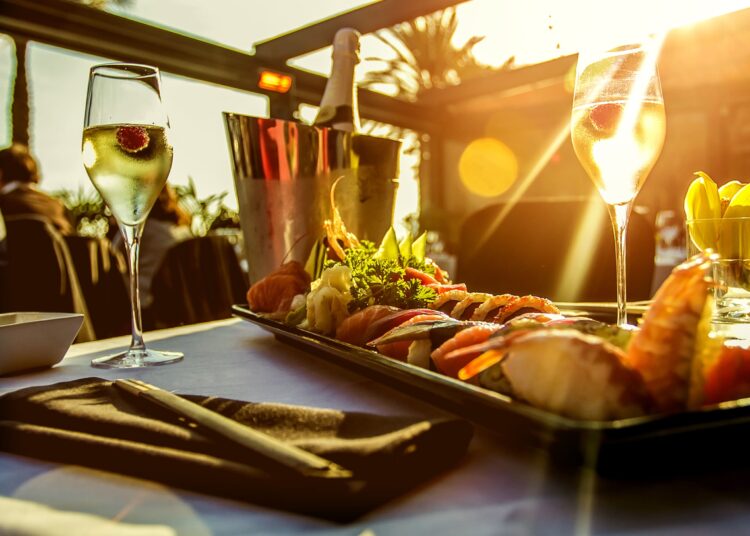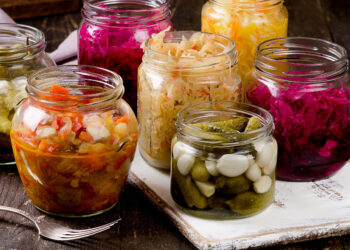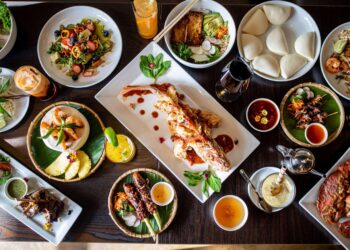Truffle Mystique: The Hidden Gems of Gourmet Dining
Dive into the enchanting world of truffles, where tradition meets innovation, and discover how these hidden gems are reshaping the gourmet landscape.
1. The Truffle Market’s Ascent
The global truffle market is poised for substantial expansion, driven by the increasing accessibility and popularity of gourmet foods. Once reserved for the most exclusive dining experiences, truffles are now finding their way into everyday culinary items.
2. Growth Projections and Mainstream Appeal
Anticipated to grow from USD 384 million in 2024 to USD 1,014 million by 2035, at a CAGR of 9.2%, the truffle market’s surge reflects a broader consumer interest. This growth is supported by the entry of truffles into mainstream products such as truffle oil, salts, and specialty snacks.
3. Factors Driving Market Expansion
Several factors contribute to this impressive growth trajectory. Innovations in truffle-based culinary products, coupled with a rising consumer preference for clean-label and organic ingredients, are key drivers.
Caviar Chronicles: A Dive into the World of Luxury Delicacies
Explore the opulent realm of caviar, where tradition meets sustainability and consumer tastes are rapidly evolving.
1. Market Growth and Projections
The caviar market is experiencing substantial growth, driven by increased disposable incomes and a taste for luxury. From a global market size of USD 394.5 million in 2024, projections estimate a rise to USD 412.65 million in 2025, with forecasts reaching between USD 614 and 876 million by 2030–34. This expansion reflects caviar’s enduring appeal and its increasing presence in fine dining and even home kitchens.
2. Regional Dynamics
While North America held a leading market share of 48.5% in 2024, Asia-Pacific is emerging as a key growth region, capturing 34.2% of the market in 2025. Europe is also showing impressive growth, with the fastest CAGR of approximately 10.55% projected to 2030. These shifts indicate a globalization of caviar consumption, influenced by aquaculture advancements and changing consumer preferences.
3. Product Preferences
Consumer tastes are diversifying within the caviar market, with Sevruga accounting for 39.4% of the product type share in 2024. Beluga is also highly favored, projected to hold between 34% and 39% of the market share in 2025. Sevruga is expected to grow at a rate of approximately 10.2%.
4. The Rise of Sustainable Practices
Sustainability is becoming a pivotal factor in the caviar industry. Strict regulations on wild-caught sturgeon have led to a surge in aquaculture and traceable farmed varieties. Consumers are increasingly valuing provenance and ethical sourcing, allowing producers with certification programs and advanced traceability technologies to command higher prices.
Wagyu Wonders: How Marbling Masters Elevate Fine Dining
Explore the captivating world of Wagyu beef and its rising prominence in luxury dining, where marbling isn’t just a feature—it’s an art form.
1. The Reign of Wagyu in High-End Dining
Wagyu beef is increasingly gracing the menus of upscale restaurants, especially in the United States and the United Kingdom. This surge reflects a broader trend where luxury ingredients are becoming essential components of gourmet experiences, drawing discerning diners seeking unparalleled culinary indulgence.
2. Indulgence Despite Economic Concerns
Even with rising menu prices causing some consumer hesitation, the allure of luxury items such as Wagyu beef remains strong. Diners are increasingly viewing these premium offerings as status symbols, willing to splurge for the elevated dining experience they provide.
3. The Art of Marbling and BMS Standards
The exceptional appeal of Wagyu lies in its distinctive marbling, meticulously graded through systems like Japan’s Beef Marbling Standard (BMS). For instance, Kobe beef must achieve a BMS score between 6 and 12 to earn its prestigious certification, guaranteeing superior texture and flavor.
4. Elevating Fine Dining with Lavish Pairings
Prestigious steakhouses are now enhancing premium Wagyu cuts with other luxury ingredients, such as caviar and king crab. This trend towards lavish culinary presentations meets the evolving expectations of affluent diners and redefines what constitutes modern luxury food culture.
The Foie Gras Debate: Tradition Meets Modern Taste Innovations
Explore how foie gras navigates the complexities of luxury dining amid changing consumer values and ethical considerations.
1. Market Dominance and Regional Preferences
Foie gras remains a prominent symbol of luxury dining, with Europe leading global consumption, particularly in France, where traditional fine dining strongly influences demand. While North America shows a smaller market share, the US sees significant sales in urban fine-dining establishments. This reflects foie gras’s enduring appeal as a delicacy, deeply rooted in culinary traditions across different regions.
2. Ethical Concerns and Consumer Trends
The foie gras market faces increasing scrutiny due to ethical concerns. In North America, nearly one in five consumers are actively seeking cruelty-free alternatives, signaling a growing demand for ethically produced gourmet options. This trend highlights a broader shift towards conscious consumption within the luxury food sector, pressuring producers to innovate.
3. The Push for Innovation
Chefs and producers are responding to ethical pressures by exploring humane production methods and plant-based alternatives. This innovation aims to satisfy both traditional gourmets and ethically-minded consumers. The development of plant-based foie gras, for example, represents an effort to maintain culinary traditions while aligning with modern ethical standards.
4. Food Service and Retail Dynamics
| Region | Market Share (%) | Leading Country | Food Service Share (%) | Ethical Consumption Trend (%) |
|---|---|---|---|---|
| Europe | >70 | France (>50% EU) | 65 | 15 |
| North America | ~15 | US | >60 | 20 |
| Asia-Pacific | 10 | China (~60% of APAC) | Not specified | Not specified |
| ME & Africa | <5 | – | >65* (luxury/tourism) | Not specified |
Data Source: Global Growth Insights “Foie Gras Market Size, Growth” June 30, 2025
The food service industry plays a crucial role in the foie gras market, with significant portions of sales occurring in restaurants, especially in the Middle East & Africa, driven by luxury and tourism sectors. The table highlights the dynamics between regional market share and ethical consumption trends, illustrating how different regions balance tradition and evolving consumer values.
Sustainable Indulgence: Balancing Luxury with Eco-Consciousness
Explore how luxury dining is evolving, blending high-end experiences with sustainable practices to meet the demands of eco-conscious consumers and investors.
1. The Rise of Sustainable Luxury Dining
Sustainable luxury dining is rapidly reshaping the high-end restaurant sector in both the US and UK. This transformation is fueled by environmentally aware consumers and investors focused on ESG, who are pushing for a balance between luxury and ecological responsibility. This shift marks a significant change in how fine dining approaches its operations and values.
2. Key Sustainable Strategies
Restaurants are adopting crucial strategies such as implementing zero-waste kitchens, giving priority to local and seasonal ingredients, and utilizing advanced technology to boost efficiency. These changes address environmental necessities and offer substantial economic advantages. Michelin-starred restaurants are leading the charge, demonstrating that sustainability can significantly enhance customer loyalty.
3. Economic Benefits of Eco-Consciousness
Embracing sustainability offers clear financial incentives for luxury restaurants. For example, restaurants that implement zero-waste kitchens and waste-reduction technologies can see operational costs decrease by up to 10%. Furthermore, these investments yield a notable return, with approximately $14 gained for every dollar invested in waste reduction.
4. Quantifying the Impact of Sustainable Practices
The move toward sustainable practices isn’t just about ethics; it’s about economics. The following table highlights the financial benefits of adopting zero-waste kitchens and waste-reduction technologies within the luxury dining sector.
| Practice | Operational Cost Reduction (%) | ROI per $1 Invested ($) | Industry Annual Waste Cost ($ Trillion) |
|---|---|---|---|
| Zero-waste kitchens & waste-reduction tech | up to 10% | 14 | 2.6 |
Data Source: AInvest News “Green Gastronomy Gold Rush: How Sustainable Fine Dining is Serving Up Profits” July 4, 2025
5. Redefining Luxury with a “Green Premium”
The integration of eco-consciousness is redefining what luxury means in the culinary world. Sustainability is increasingly viewed as a core revenue driver, not just an ethical choice. This “green premium” is transforming luxury, making environmental responsibility an essential component of gourmet excellence and shaping the future of fine dining.
Q&A
Question 1: What are the key factors driving the growth of the global truffle market?
Answer: The truffle market’s expansion is fueled by several factors. Increased accessibility and popularity of gourmet foods are bringing truffles into mainstream culinary items. Innovations in truffle-based products, along with a rising consumer preference for clean-label and organic ingredients, are also key drivers. The premiumization of fine dining and enhanced retail access are broadening the appeal beyond elite circles, with consumers increasingly seeking genuine truffle content over artificial aromas.
Question 2: How is the caviar market evolving, and what are the main regional trends?
Answer: The caviar market is experiencing substantial growth driven by rising disposable incomes and a growing taste for luxury. While North America currently holds the largest market share, Asia-Pacific is a key growth region. Europe also shows strong growth, with the fastest projected CAGR. This reflects a globalization of caviar consumption, influenced by aquaculture advancements and changing consumer preferences. Consumer tastes are diversifying, with Sevruga and Beluga remaining highly favored.
Question 3: What makes Wagyu beef so appealing, and how is it shaping the fine dining landscape?
Answer: Wagyu beef’s exceptional appeal stems from its distinctive marbling, meticulously graded by systems like Japan’s Beef Marbling Standard (BMS). This superior marbling guarantees exceptional texture and flavor, making it a highly sought-after ingredient in upscale restaurants, particularly in the US and UK. Prestigious steakhouses are further enhancing its appeal by pairing Wagyu cuts with other luxury ingredients, reinforcing its status as a symbol of luxury and culinary indulgence.
Question 4: How is the foie gras market navigating ethical concerns and evolving consumer values?
Answer: The foie gras market faces increasing scrutiny due to ethical concerns surrounding its production. In North America, a growing number of consumers are seeking cruelty-free alternatives, reflecting a broader shift towards conscious consumption. To address this, chefs and producers are exploring humane production methods and plant-based alternatives, aiming to balance traditional culinary practices with modern ethical standards. Europe, particularly France, remains a dominant market, showcasing the enduring appeal of foie gras despite these challenges.













